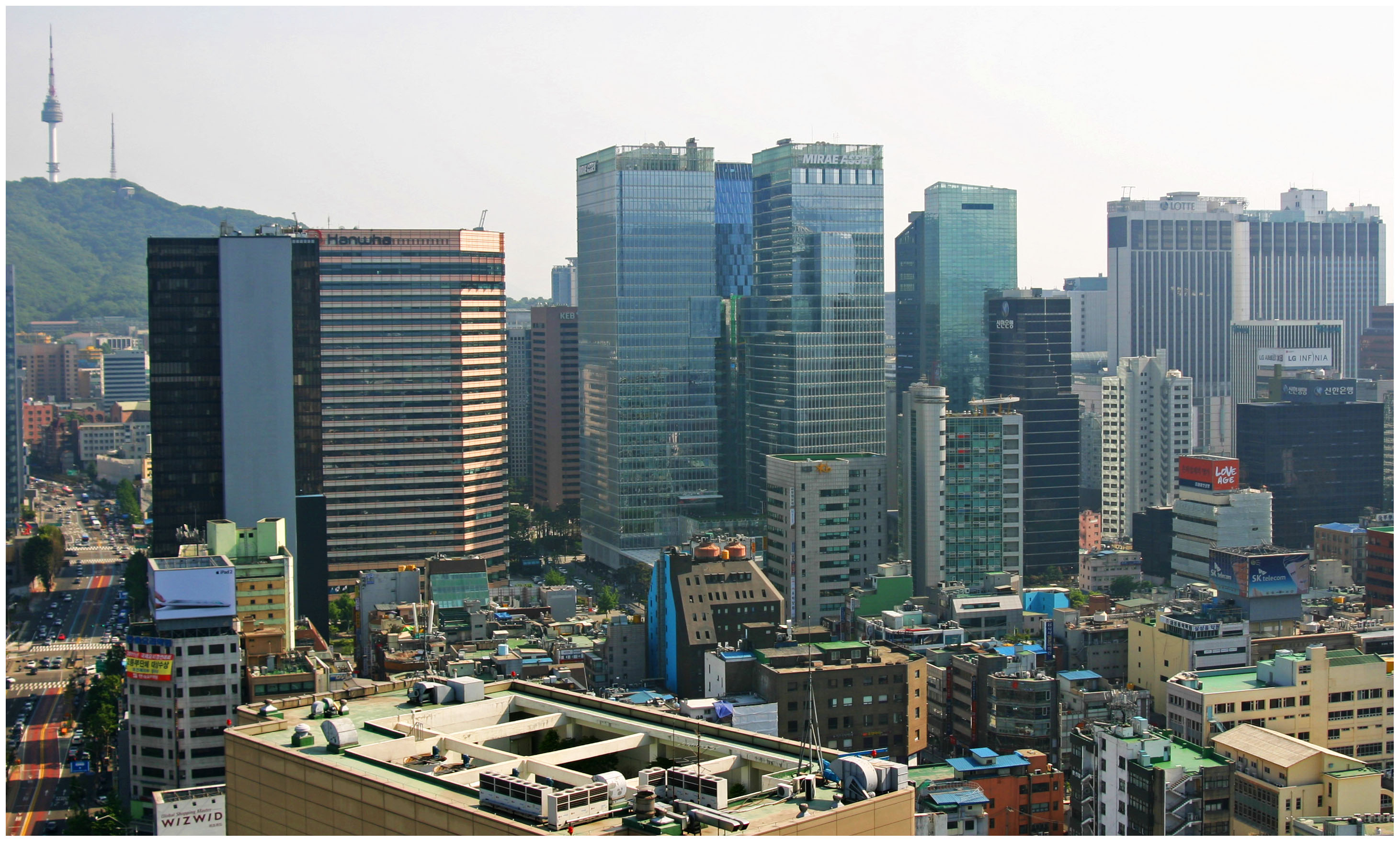When I first moved to Seoul at the end of 2010 I was quickly overwhelmed. The city is huge and the region boasts some 24.5 million people. That’s endlessly big…something to which only one or two other places on Earth can compare. But after being there for nearly three months that year, and then returning to Seoul for another nine months in 2011, I easily fell in love with the place.
Seoul is interesting not just because it is big, but because it is unique.
It is a special time in Korean culture. The younger generations are the first to have grown up in a completely modern, free and democratic society. Korea’s rapid industrialization, the fastest the world has ever seen, is now in its rear-view mirror and the people are now looking to improve their standards of living as opposed to simply throwing up housing as quickly as possible.

Looking south over Seoul’s Jongno district. Photograph by Randy Simes for UrbanCincy.
The obvious result has been a public policy response centered in the nation’s political and economic capital. Seoul’s mayors, if well-performing, often go on to run for president. One of the more notable cases is Lee, Myoung Bak, or otherwise known casually as MB.
MB made the very controversial decision to tear down a 5.2-mile stretch of elevated highway through the heart of Seoul and replace it with a linear park following a day-lighted stream. Many were skeptical of the unproven idea, and had it not worked it would have spelled the end of MB’s political career. As we know, the Cheonggyecheon has been a massive success by almost all measurable accounts and MB went on to serve as the president of the Republic of Korea from 2008 to 2013
While in office, MB pursued sustainability. Korea’s 2009 stimulus, following the global recession, was the world’s most sustainable, investing more than 80% of its funds on sustainable energies, transportation or technology. Songdo, one of the world’s early pilot LEED for Neighborhood Development pilot projects also began construction in 2008.
On top of all this, the younger generations have shifted their focus squarely on design. You can see it reflected in food preparation and café design. You can see it in the creative street art and gallery culture. And you most certainly see it in the new public spaces and buildings being built in Seoul and elsewhere throughout the 50.2-million person country.
It is from this cultural shift that earned Seoul the title of World Design Capital in 2010, and why formerly drab spaces all throughout Seoul are being transformed into works of inspired design.
I suspect these trends will only continue, and will continue to fuel Seoul’s international rise. And this is why I am so excited to return.
On September 10 I flew back to Seoul to work on new sustainable planning and design projects with my company Parsons Brinckerhoff.
The move comes with some trepidation, but much excitement and I will be sure to share my journey with those of you who are interested in following me on Twitter, Facebook or Instagram.
Perhaps more importantly for you, the reader, is that UrbanCincy will continue in its current form. I will still contribute to the site from time-to-time, but John Yung will take on a greater leadership role for the site.
John will be joined by long-time contributors such as technologist Travis Estell and writer/photographer Jake Mecklenborg, as well as three new contributors that you may have seen publishing content over the past few months: Eric Fazzini, Paige Malott and Jacob Fessler. Get to know them at one of our monthly URBANexchange events.
This is a more than capable group and they have largely been running the site for the past several months.
UrbanCincy never has and never will be about one person, one project or one idea. It is about supporting urbanism in Cincinnati and pushing for things that will improve this great city we all love. We hope you will continue to read our stories and listen to our podcasts as we shift into the next exciting chapter for UrbanCincy.
